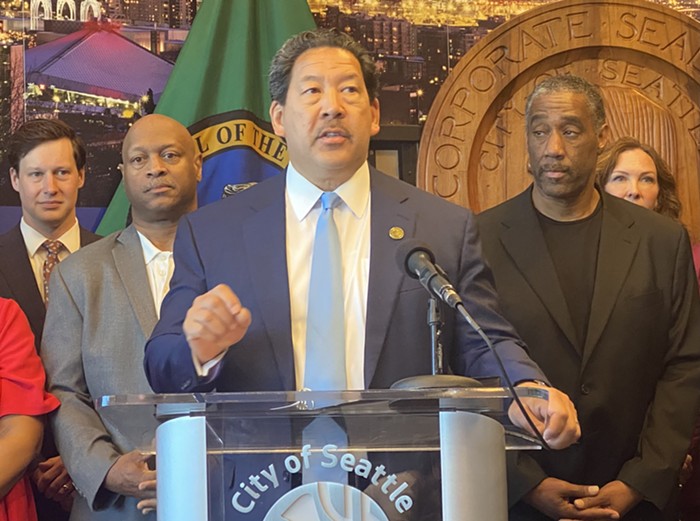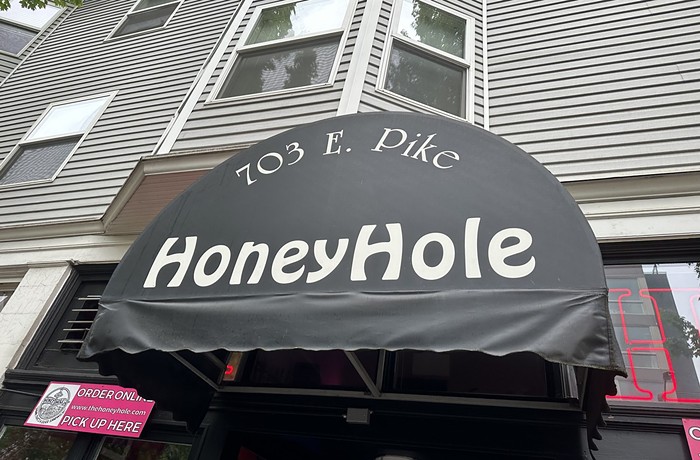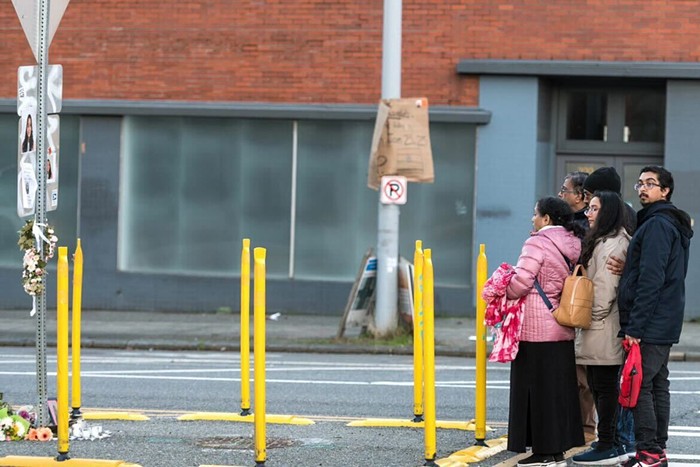
As is well known, the City of Seattle is experiencing an "emergency" on homelessness, with an estimated 2,813 people sleeping outside every night in Seattle and only 1,600 shelter beds funded by the city. At the same time, city government has controversially stepped up evictions of homeless people from their camping sites around Seattle. If you want to understand that process and how it affects homeless people's ability to survive, you have to understand an obscure 20 page document known as the MDAR. Columbia Legal Services, a local legal firm, has been critical of the city's approach under the MDAR. Yurij Rudensky, a staff attorney there, explains why he believes the City Council needs to pass a law closing the MDAR's loopholes:
What is the MDAR?
The MDAR is a set of multi-departmental administrative rules (hence the acronym) that were developed in 2008 under the Greg Nickels administration to coordinate a response to unsheltered folks sleeping in public spaces.
Who are the rules for?
The rules are supposed to guide the city in its response to homeless encampments. But one of the things we've been concerned about recently is that every time the city interacts with an encampment, a different set of procedures has been used. The MDAR itself is not followed uniformly.
What's an example of an MDAR rule, and how are these rules applied?
An encampment is defined as three or more structures that appear to be used for unauthorized camping. For an unsheltered individual that's staying on his or her own, these rules don't apply. So there's no process afforded to that individual under the MDAR.
In terms of the procedures, the first thing that people are supposed to get is a notice. But the type of notice that people receive is not specified. On the ground, we have found that notice is only being provided by a posted print-out in English. So, this doesn't take into account people for whom English is a second language or don't speak English at all. It doesn't take into account the needs of people who have very limited literacy. It doesn't take into account the needs of people who are blind. It doesn't take into account people for whom written notice doesn't mean much because of various mental or sensory disabilities. Effective notice is a big concern for us.

What else is in the MDAR?
Timing. The notice should be posted 72 hours ahead of the sweep. That's just the minimum guideline.
But even if we assume that this sufficient for someone to move his or her whole life, we're finding that even though the notice will say 72 hours, the sweep sometimes occurs before the 72 hours are up or as much as a week later.
So some people will disregard the notice once that period passes and nothing happens. Maybe they assume the city cancelled the sweep. And that’s the problem. Once an area is posted and the 72 hours is up, a sweep can take place at any point. It becomes very unpredictable.
The other issue is that the people who are most affected are the ones with the most serious issues—mobility issues, things of that nature. People who can read the notice, understand the notice, and physically gather all of their belongings and relocate somewhere else are not going to be nearly as affected by the city’s sweeps as those to whom the notice means little or nothing at all.
What happens if no one is there when the sweep happens?
When property is unattended, there are again certain procedures and definitions that apply with regard to what gets trashed and what gets saved.
But we've seen very few items that are actually retained. In at least one sweep, there was only one truck, and it was heading to the dump. There was no alternate receptacle or vehicle for things to be taken to storage.
According to the MDAR, personal property is defined as an item that belongs to a person, has an "apparent utility," is not hazardous, and falls within a list of items or "appears to have a reasonable value of more than $25." The city is supposed to store such items for at least 60 days.
The city workers have a tough job. And I would question their ability to accurately assess the value of people's belongings. We also think a dollar value doesn't truly make sense in these circumstances. While a used sleeping bag may not get $25 on eBay, it is still an incredibly valuable survival item for an unsheltered individual. Reducing things to a dollar value doesn't necessarily capture the true value of the object to the individual.
Also, we've heard heartbreaking stories about people losing really invaluable personal objects. One young woman lost the only photo of her biological family. That's something that doesn’t carry a lot economic value, but has a lot of sentimental value.
Also, when city workers encounter a tent or a backpack that's zipped, up, they don't necessarily open it up and rifle through it. If someone isn't there to claim the tent or the backpack, from what we've seen, those items stay zipped up and are just thrown out. We've heard stories that people have had things like laptops and cell phones thrown out. We’ve heard stories of very personal items, like keepsakes, being trashed.

Under the MDAR, does anything get retrieved and stored?
If an owner is not identifiable and the item is worth more than $100, an official is supposed to publish a notice in the newspaper or on a city website that the item is being stored. At the sweep location, the city is supposed to post a notice about how people may claim items. Right now, all the information being provided is on the original 72 hour sweep notice. It's a telephone number for a general information line. There’s no toll-free number. This is being provided only in English. So there are all the same notice issues that I discussed earlier.
There are also some significant loopholes if something is deemed to be hazardous, where it can just be thrown away wholesale.
How do those loopholes work?
A hazardous item is anything thought to pose a health or safety risk to the public or to the city workers. This could be a blanket because maybe the person has some sort of communicable disease. Or a backpack because it might belong to an IV drug user and there might be needles in the backpack. This has been what we’ve heard from the city workers, that backpacks and tents are too dangerous to open up and parse through.
This hazardous items exception is very broad in terms of the latitude that it gives city workers to not actually protect people's belongings.
As a general rule, they don’t open up bags?
This is a whole other can of worms that just shows how complicated and problematic a lot of these policies are.
In most of the sweeps that we've observed, the labor has been provided by a Department of Corrections (DOC) work crew. We're not quite sure what the details are and how the city contracts with the DOC for this labor, but these are unpaid individuals who are working as part of their sentence.
So there’s a bit of a disconnect because the DOC wants to protect these individuals, and is there as a contractor, and the City of Seattle has these administrative rules, and has obligations to the people whose property is being handled. To the DOC, these MDARs don't matter much. They only bind the city. And it's the DOC work crew that's actually doing the labor.

So what happens on the ground?
There are city officials on the ground and they're there to carry out the MDAR. But the process doesn’t always work the way it should.
In one instance, a homeless individual had valuables thrown away. Including medication and identification that he needed. He had actually run to a nearby shelter to get more trash bags so he could save his things. But they had been thrown onto the dump truck. And he was pleading to be able to go and get his belongings. He really needed his medication and his identification.
And the DOC supervisor said “No, once things are on this truck, it's a one way trip to the dump. We don't pull anything off the truck. There are a lot of needles, garbage, so once it's on the truck, it's just on the truck.”
Meanwhile, the official from the city was trying to see if this man's medications could be recovered in some way. So there can be that kind of conflict, where ultimately, the DOC supervisor is looking out for his or her responsibility to the individuals providing the labor, while the city may be trying to follow the procedures that it said it would.
What happened, in the end?
He lost his medication.
What else should people know about the MDAR?
Notice is not required for an encampment where these is a suspicion of someone engaging in violent crime or felony drug delivery. That's understandable on the one hand, but on the other hand, it is pretty broad because it allows others who may have nothing to do with the criminal or drug activity to be swept because they are staying close by.
The MDARs also provide for notices of exclusion. People can be excluded from parks and other public properties based on their non-compliance. This is troubling because parks have some of the only public restroom facilities available to people.
And ultimately, administrative rules are not very binding. If there's a shift in the administration, there is nothing that obligates that executive to follow these rules. So a completely different set of rules could be instituted, or the rules could be scrapped altogether. There could be a different interpretation of the rules. As an example, these rules were created by the Nickels administration. Under the McGinn administration, there was this now-famous memo called the Al Poole memo—an interpretation of the MDAR. Now that Murray is in office, the Al Poole memo is not being followed, so there has already been some variance.

What's the Al Poole memo?
One of the most significant things that the Al Poole memo did was ensure outreach to all individuals prior to a sweep. Meaning people staying in encampments with fewer than three structures would get the same treatment. It also expanded the amount of outreach provided: social workers going out and engaging with affected individuals.
The Al Poole memo also suspended a rule that did away with notice for encampments that had already been swept a number of times. The memo established that whenever there was to be a sweep, the city would always post notice.
How was the MDAR developed? Were homeless advocates consulted?
The MDAR was developed with the input of certain organizations, including Columbia Legal Services. It was ultimately a compromise. Prior to the MDAR, there was no formalized process. There were no rules that the city was following. So it represented a positive step forward in that regard. But at the same time, one of the things we want to do is make sure that policies are made more permanent.
What triggers a sweep in the first place?
Our understanding is there's some sort of assessment. It seems to be some sort of combination of complaints plus visibility and conditions at a location. But we have also heard that, in certain instances, the outreach workers tell the city that a certain location shouldn’t be swept. Usually, this is because the conditions are not that bad and they could, with additional outreach, move those people somewhere else. A sweep would be disruptive to their work.
I don't know what that dialogue looks like exactly between the service provider that contracts with the city and the city. But that would be a good thing to include in a new ordinance [a city law]. Those professionals whose job it is to link people with services–-their expertise should inform the decisions that are made.
How should the MDAR be changed or improved?
Ideally, this should be done through a municipal ordinance that would offer greater protections to individuals and their belongings. And it would make sure that the city's policies are more productive in actually dealing with the underlying issues.
How would you characterize the impact of the MDAR on the homeless population?
When people haven't been sufficiently engaged with and they don't have other options, people ultimately just have to go and find another place to stay outside—but in certain cases without the things they need for survival.
The city has even admitted as much. A representative pulled up a map that plotted all the various unauthorized encampments in the city of Seattle in a briefing to the City Council. Essentially, he admitted that whenever there’s sweep of one location, another encampment pops up somewhere else. It's not accomplishing much because the numbers are such that we don't have adequate, acceptable indoor shelter options. There will be people who will have to sleep outside.
And until that changes, these sweeps—and especially when, as part of these sweeps, people aren't told where they can go; they're just told they can't be here—represent a policy that uses a lot of resources, but ultimately just chases people from one part of the city to the next.
This interview has been edited for length and clarity.



